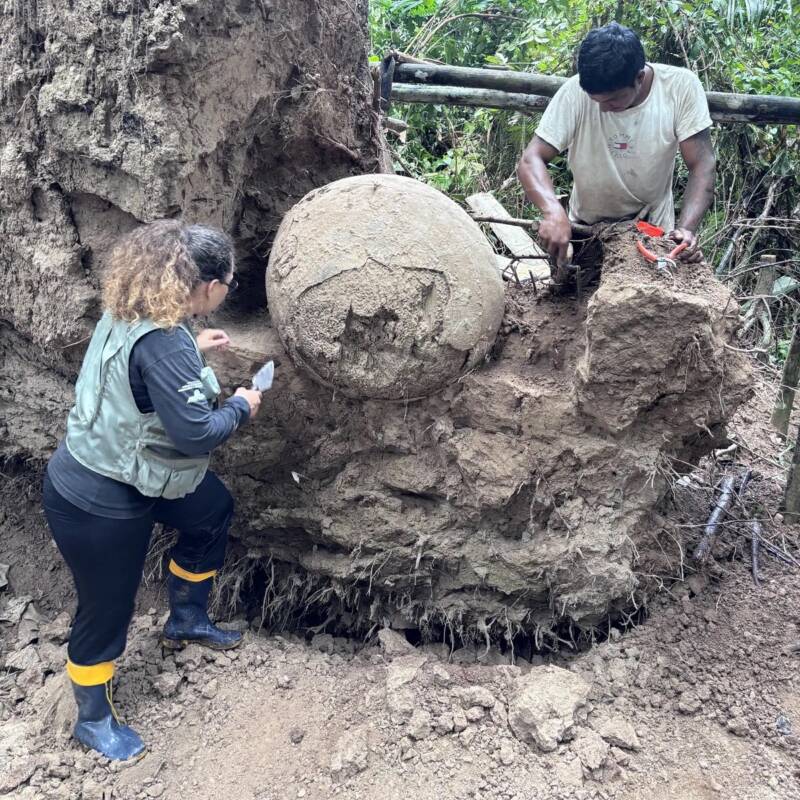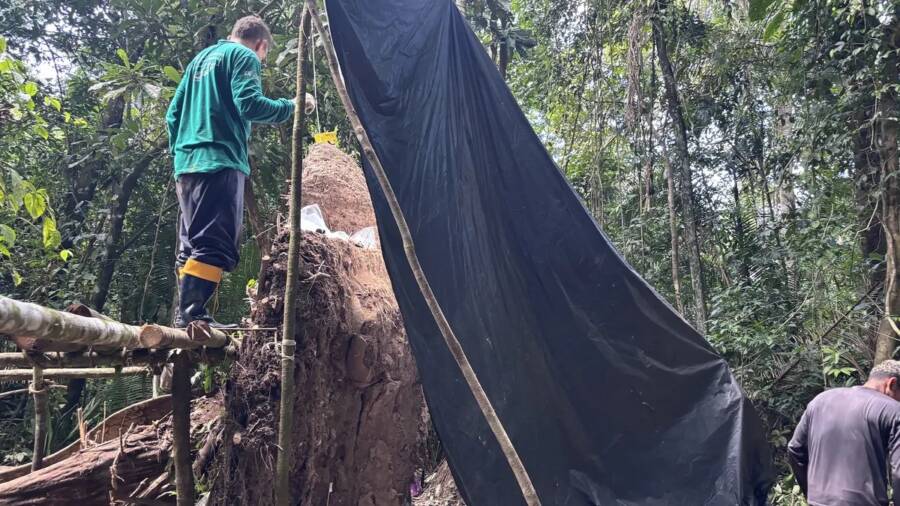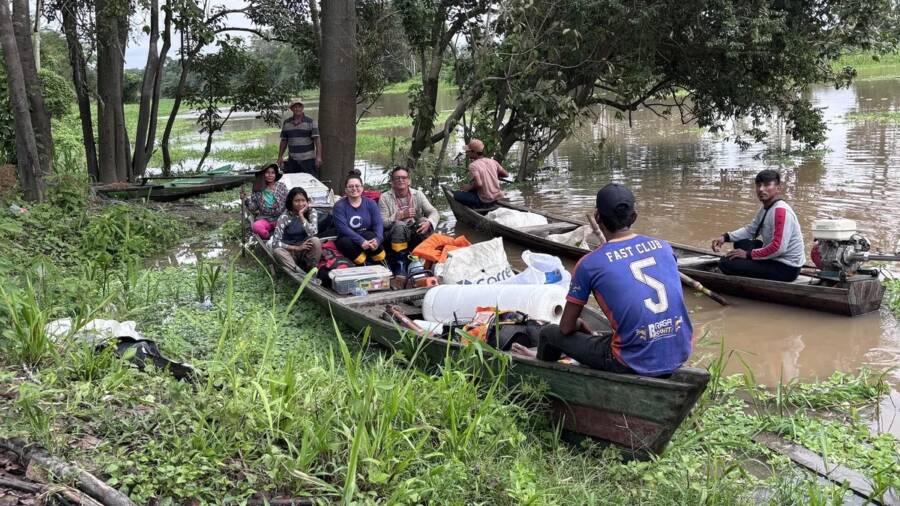The urns were buried 16 inches deep in a location where Indigenous people once created a series of artificial islands, but it's unclear which pre-Columbian culture put them there.

Márcio AmaralArchaeologist Geórgea Layla Holanda works to excavate the urns.
A fisherman in the Brazilian Amazon recently came across a fallen tree and found something unexpected within its roots. Buried in the dirt were seven ceramic urns — and they contained human remains.
While it’s not clear which culture these ceramic vessels belonged to, scientists believe they’re pre-Columbian. Now, the artifacts are providing new insight into the lives of the people who once inhabited Lago do Cochila, a site that is part of a group of artificial islands built by Indigenous Amazonians hundreds or thousands of years ago.
The Unexpected Discovery Of The Funeral Urns

Márcio AmaralLocals aided archaeologists in removing and transporting the urns.
This discovery was announced on June 11 via a statement from the Brazilian Ministry of Science, Technology, and Innovation. In the statement, researcher Geórgea Layla Holanda described the urns:
“They are large in size and have no visible ceramic lids, which may indicate the use of organic materials for sealing, which have now decomposed. They were buried 40 centimeters (16 inches) deep, probably under old houses.”
Researchers credited local villagers for their part in the discovery, particularly local fisherman Walfredo Cerquiera, who recognized the value of the find and reached out to Father Joaquim Silva at the Tefé Prison Ministry. The priest then contacted archaeologist Márcio Amaral, who led the expedition to the site.
The excavation posed unique challenges. Because of the condition of the urns and the location, archaeologists had to stand on an elevated structure made of wood and vines — only possible thanks to the help of locals.
“We had never excavated like this, 3.2 meters (10.5 feet) above the ground, with the installation of an elevation datum for stratigraphic control,” Amaral said. “It was completely collaborative and unprecedented work.”
Excavating And Transporting The Artifacts

Geórgea Layla HolandaThe improvised scaffolding required for the excavation.
The process of transporting the urns to the Mamirauá Institute in Tefé for further analysis was also complex, requiring canoes, temporary camps, and creative methods to protect the urns. The remote location of the site only compounded the difficulty. Once the urns were safely at the headquarters, however, researchers were able to study them further.
Two of the larger urns contained human bones, while the others held a mix of seeds and bits of fish, frogs, and turtles that were likely part of a funeral ritual.
While experts aren’t sure exactly which culture buried these urns, their discovery matches the funerary practices of other known Indigenous groups. In some Amazon tribes, the deceased were placed in baskets and lowered into the river until fish ate away their soft tissues. Then, their bones were cremated and placed inside urns, which were buried beneath houses.

Rosiele KokamaThe recovered urns were transported by canoe for further study.
Scientists also don’t know if the same group that buried these urns also created the manmade island on which they were discovered.
“These artificial islands are archaeological structures built in higher floodplain areas, with material removed from other areas and mixed with ceramic fragments, intentionally positioned to provide support,” Amaral stated. “It is a very sophisticated indigenous engineering technique, which demonstrates land management and significant population density in the past.”
Research on the urns is still underway, but the observations made so far are already challenging the narrative that these floodplains were only ever occupied temporarily. Perhaps future excavations and discoveries will offer further evidence of a permanent society that once thrived in the region.
As Amaral said, “This was archaeology from the inside out.”
After reading about the discovery of funeral urns in the Brazilian Amazon, learn all about history’s famous Amazon women. Then, go inside the history of canopic jars, the funerary vessels of ancient Egypt.





